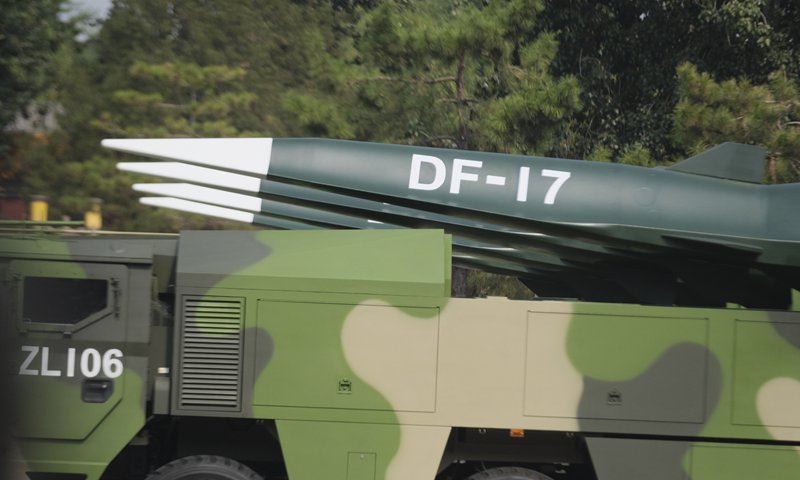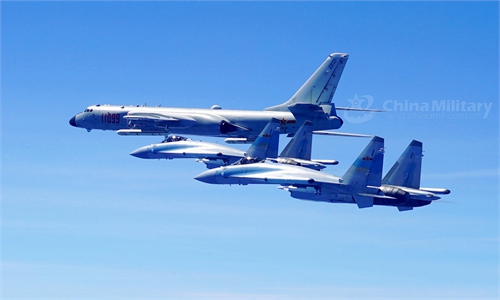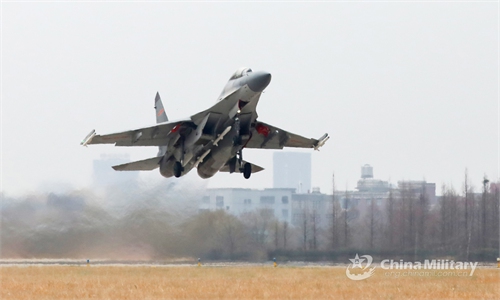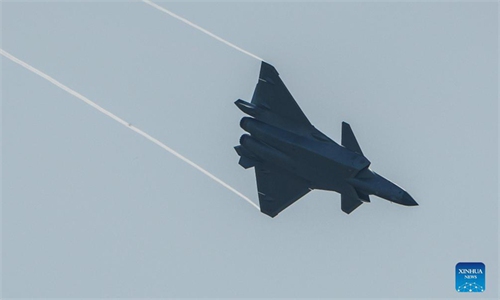China's new wind tunnel ready to shape development of hypersonic weapons, equipment

Making their public debut, DF-17 missiles join the National Day parade in Beijing on October 1, 2019. Photo: Zhang Haichao/GT
China's one-meter-class hypersonic aerodynamic wind tunnel recently passed major calibration tests, indicating that the facility is formally capable of conducting tests for development projects. The wind tunnel aims to serve China's aerospace strategy and support the development of hypersonic weapons and equipment, its maker announced on Sunday.
Designated the FL-64, the wind tunnel - built by the Aerodynamics Research Institute under the state-owned Aviation Industry Corp of China (AVIC) - recently passed air flow distribution calibration tests under major Mach numbers, AVIC revealed in a statement published in its WeChat account on Sunday.
This development means that the wind tunnel has successfully passed the first phase of calibration, and has formally become capable of conducting tests for development projects, AVIC said.
The development of the FL-64 took two years, and broke the construction speed record compared with similar facilities, the statement said, noting that the wind tunnel is a large and complex one, and its construction was challenging due to the requirements of being hypersonic, including high temperatures, pressure and speed levels.
It is designed to simulate speeds from Mach 4 to 8 under a total temperature of 900 Kelvin (626.85 C) at a simulated flight altitude of 48,000 meters, AVIC said, noting that it can operate for more than 30 seconds, testing a hypersonic aircraft's capabilities including the separation and deployment of weapons from the aircraft.
With a foothold on serving China's aerospace strategy, the FL-64 aims to resolve the urgent aerodynamic problems that various aircraft are facing, and it will become another important tool in supporting the development of hypersonic weapons and equipment, according to the statement.
AVIC Aerodynamics Research Institute has built low-speed wind tunnels like the FL-8, FL-9, FL-10 and FL-51, and high-speed wind tunnels like the FL-2, FL-3, FL-60 and FL-62, which because cornerstones for China's aerodynamic research for the development of aircraft, missiles, spacecraft and rockets.
In late 2013, AVIC Aerodynamics Research Institute began to build its first hypersonic wind tunnel, the FL-63, which has a caliber of between 0.3 to 0.5 meters and can operate from Mach 3 to 10.
After the success of the FL-63, the construction of the larger FL-64 started in late 2019 and wrapped up its major calibration tests in September.
Wind tunnels are crucial in aircraft development, since they are more accurate and efficient than computer simulations and model experiments, Fu Qianshao, a Chinese military aviation expert, told the Global Times.
Computer simulations are cheaper but may be inaccurate, and model experiments that are conducted in the air could be too expensive, experts said.
China is also building the JF-22 hypervelocity wind tunnel that can simulate a speed of Mach 30 at high altitudes. Construction is expected to finish in 2022, and the facility will contribute to the country's hypersonic and aerospace aircraft programs, CCTV reported in August.




